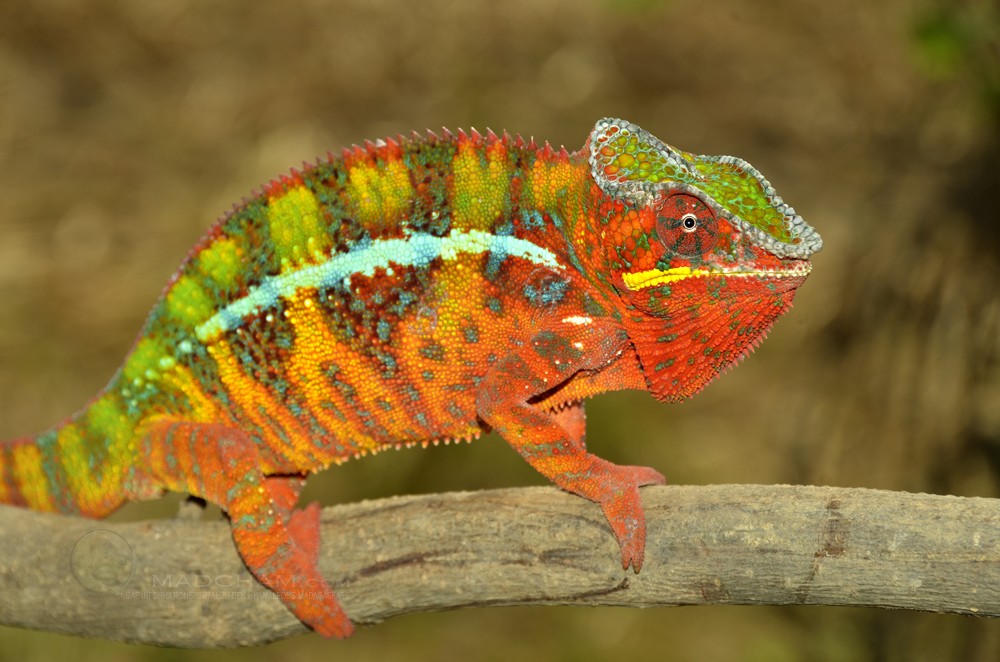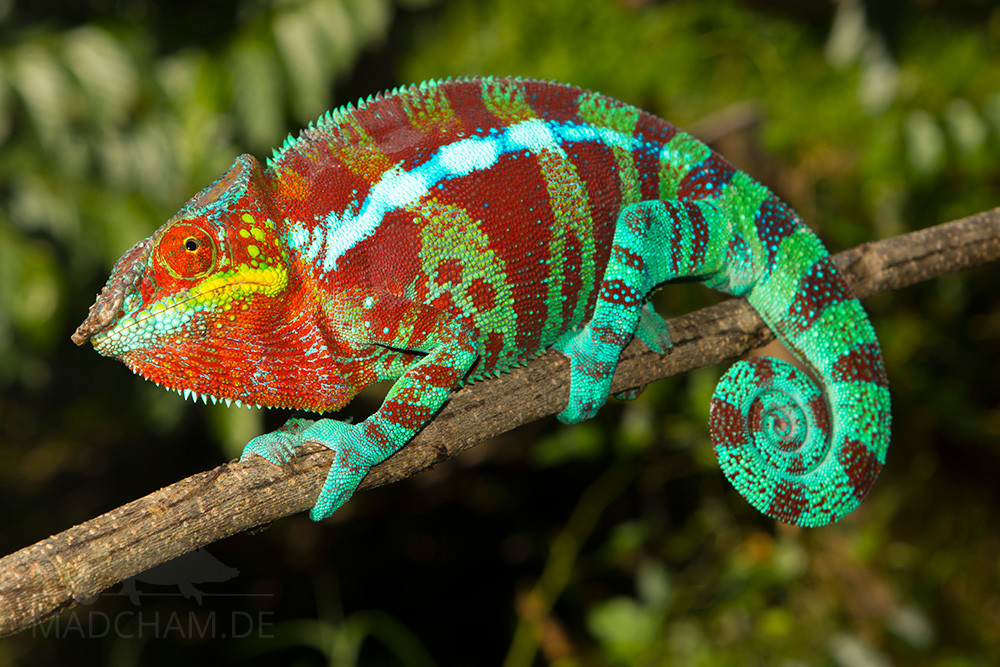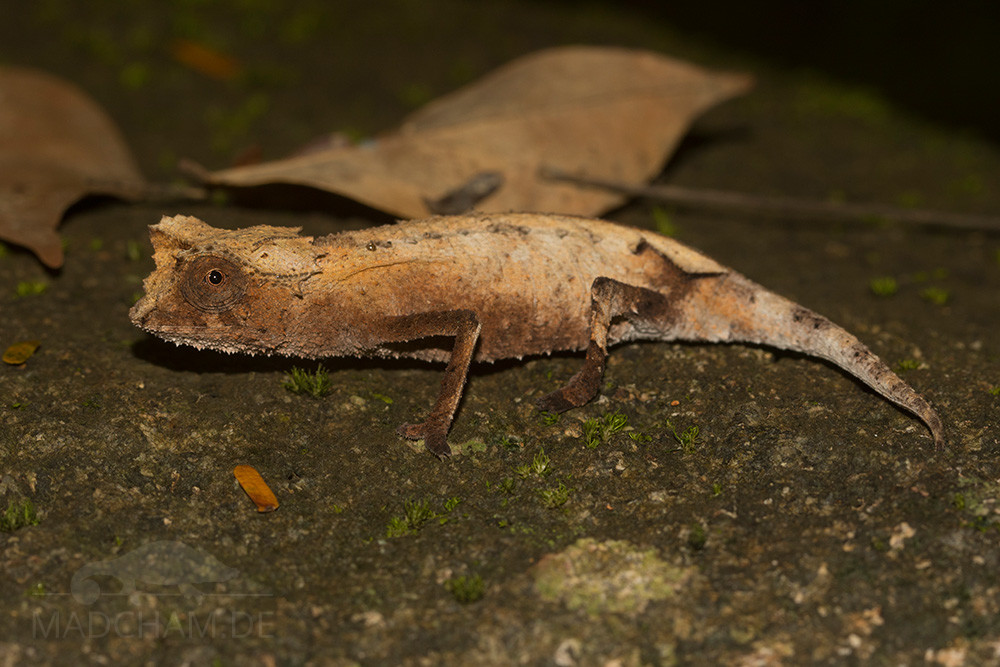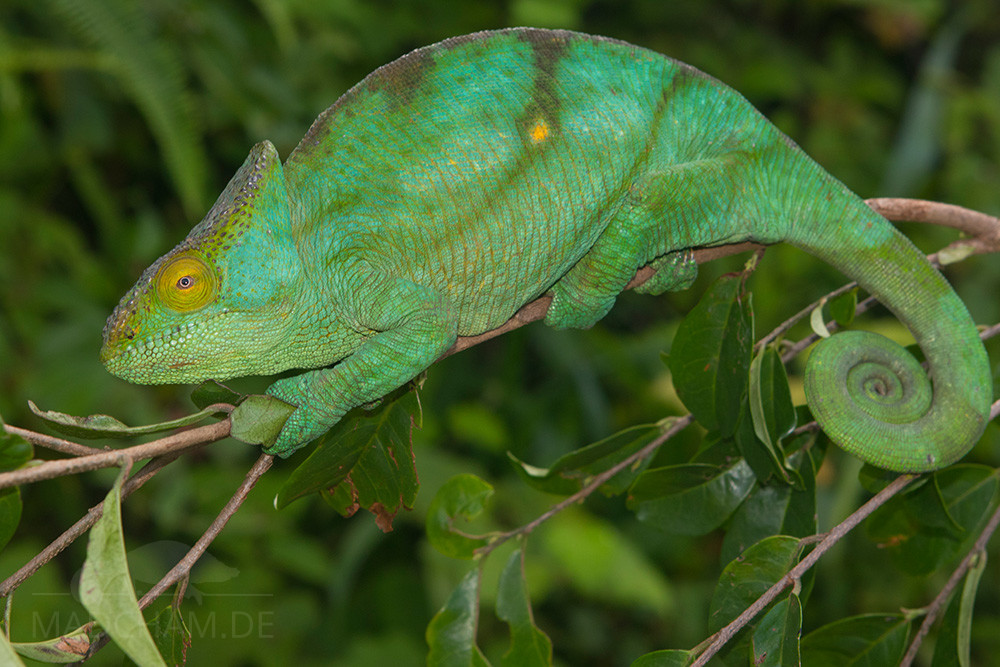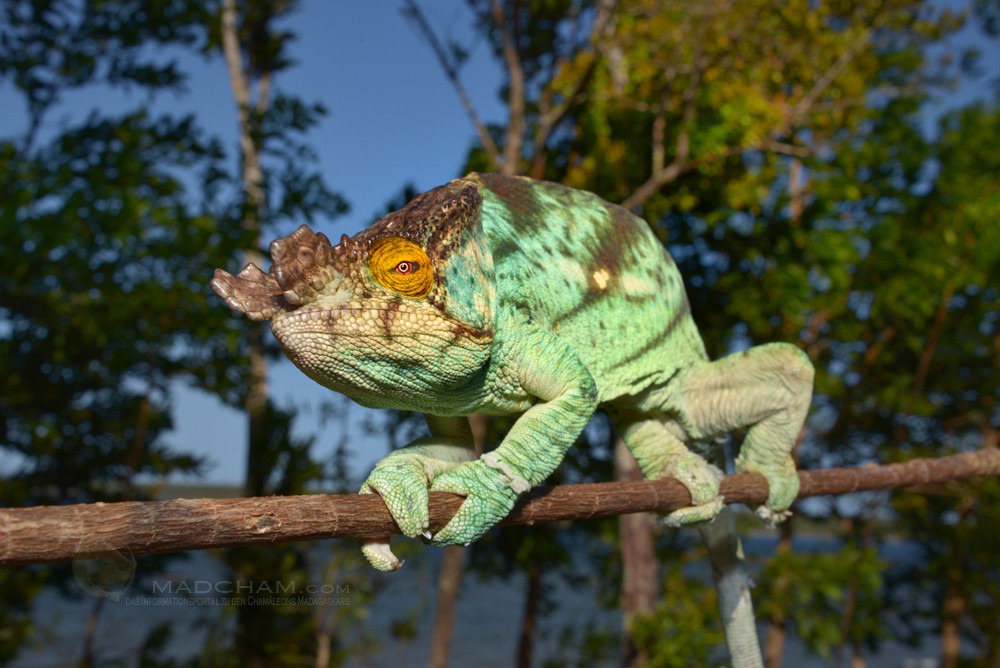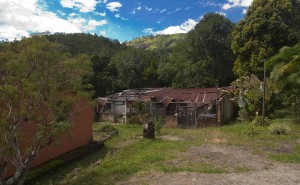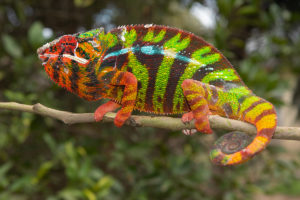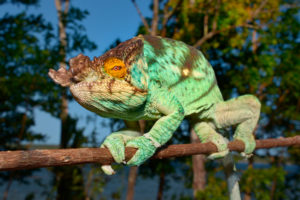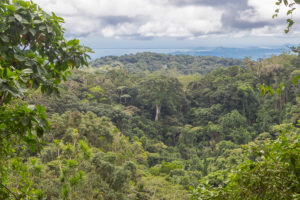If you want to buy a chameleon, you will need to decide sooner or later whether you like to have a captive bred (cb) individual or a wild caught (wc) chameleon. Generally, in our opinion you should always prefer controled captive bred chameleons. Today, many species are regularly available as captive bred specimen in Germany and other countries.
Wild caught
Wild caught chameleons are weakened due to the long transport route and the usually very suboptimal accommodation (usually bags with several animals or narrow drawers) and often in poor condition when they arrive in their destination country. They are almost always infected with parasites, have some injuries, are dehydrated and of unknown age. Imports still kill chameleons. This should not be supported if not absolutely necessary. Unfortunately there are so far only few realizable possibilities to import wild catches without losses.
Another problem with wild catches is that species without CITES quotas are repeatedly imported – those should never have received papers. This might happen due to the easy confusion of some species with similar species or to the fact that they were counted among other species until a few years ago. In some cases, however, chameleons are also deliberately exported illegally under a false species name. Some wholesalers outside the EU are known for their “offspring” to be indeed illegal wild caughts with forged papers from official authorities. Particular care should therefore be taken when buying chameleon species that have not been captive bred very much and it is better not to buy animals of dubious origin.
By the way: Catching wild chameleons in Madagascar does not ensure any form of higher environmental awareness or even species conservation among catcher families. The animal catchers usually come from extremely poor families, receive wages of less than 0,25 € per day, have no social standing and usually do not even know what conservation is.
Escpecially concerning rarely captive kept chameleon species, only few captive bred specimen are on the market, and sooner or later one is forced to buy a wild caught individual. In our opinion, such species should be only kept and cared for by very experienced chameleon keepers. Thus the animals have the highest chances to reproduce successfully and build the base of a stable population in captivity. Moreover every future keeper should inform himself about the latest laws inside the country and European Union (or elsewhere) and look into CITES quota to get to know if the wished species can be legally acquired at all. Our website helps to clearify if animals perhaps only occur in protected areas, where they cannot be taken legally from. If you supported illegal dealers in chameleon trade, you also support species species extinction in Madagascar.
Captive bred
Captive bred chameleons instead grow up under well known conditions, are stable when sold, the age is clear, you can have a look at the parents and in best case, several fecals examined by a reptile vet reduce the likelihood that the animal has a high parasite burden. Further more, transports are way shorter and in most cases, the price is lower than this of a wild caught chameleon.
What about farm bred chameleons?
Farm bred (fb) chameleons or other reptiles are those that were bred especially for the export from Madagascar in specialized breeding farms. The parental generation is taken out the wild, in best case people continue breeding with captive bred animals only after some years. In reality, today there is no working legal breeding farm in Madagascar anymore – to our knowledge. So you can be sure that a chameleon declared as farm bred but coming from Madagascar is actually an illegal wild caught with very high probability.

